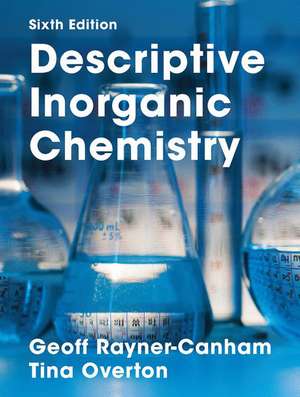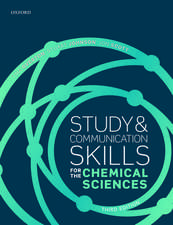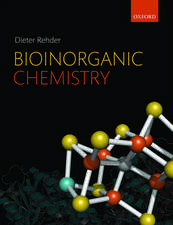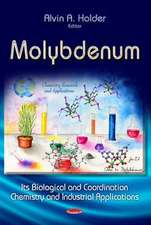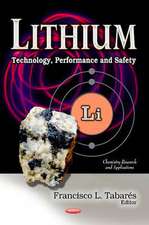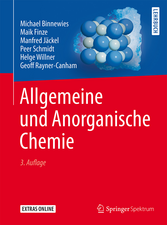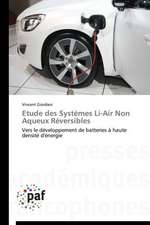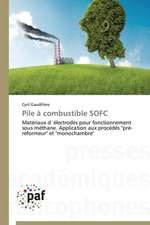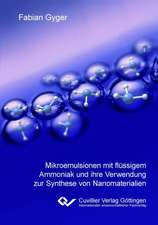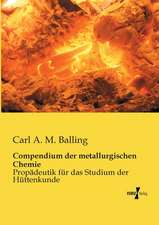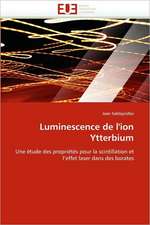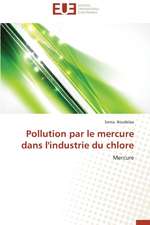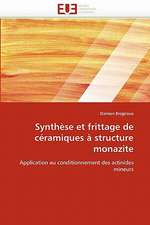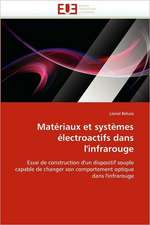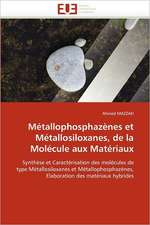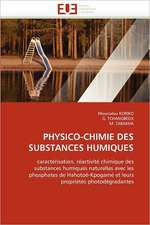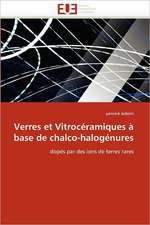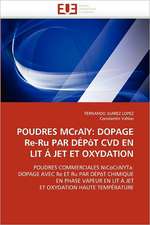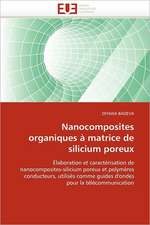Descriptive Inorganic Chemistry
Autor Geoff Rayner-Canham, Tina Overtonen Limba Engleză Hardback – 22 dec 2013
| Toate formatele și edițiile | Preț | Express |
|---|---|---|
| Hardback (2) | 437.41 lei 22-36 zile | +119.87 lei 6-12 zile |
| Macmillan Learning – 22 dec 2013 | 437.41 lei 22-36 zile | +119.87 lei 6-12 zile |
| W. H. Freeman – 10 mar 2014 | 1512.08 lei 22-36 zile |
Preț: 437.41 lei
Preț vechi: 643.97 lei
-32% Nou
Puncte Express: 656
Preț estimativ în valută:
83.72€ • 90.97$ • 70.37£
83.72€ • 90.97$ • 70.37£
Carte disponibilă
Livrare economică 31 martie-14 aprilie
Livrare express 15-21 martie pentru 129.86 lei
Preluare comenzi: 021 569.72.76
Specificații
ISBN-13: 9781319154110
ISBN-10: 1319154115
Pagini: 768
Ilustrații: Bibliographie
Dimensiuni: 202 x 261 x 32 mm
Greutate: 1.49 kg
Ediția:6th edition 2014
Editura: Macmillan Learning
Colecția W. H. Freeman
ISBN-10: 1319154115
Pagini: 768
Ilustrații: Bibliographie
Dimensiuni: 202 x 261 x 32 mm
Greutate: 1.49 kg
Ediția:6th edition 2014
Editura: Macmillan Learning
Colecția W. H. Freeman
Cuprins
1. The Electronic Structure of the Atom: A Review2. The Structure of the Periodic Table3. Covalent Bonding and Molecular Spectroscopy4. Metallic Bonding, Alloys, and Composites5. Ionic Bonding and Solid State Behaviour6. Why Compounds Exist - Inorganic Thermodynamics7. Solvent Systems and Acid-Base Behavior8. Oxidation and Reduction9. Periodic Patterns10. Hydrogen11. The Group 1 Elements: The Alkali Metals12. The Group 2 Elements: The Alkaline Earth Metals13. The Group 13 Elements14. The Group 14 Elements15. The Group 15 Elements: The Pnictogens16. The Group 16 Elements: The Chalcogens17. The Group 17 Elements: The Halogens18. The Group 18 Elements: The Noble Gases19. Transition Metal Complexes20. Properties of the 3d Transition Metals21. Properties of the 4d and 5d Transition Metals22. The Group 12 Elements23. Organometallic Chemistry24. The Rare Earth and Actinoid Elements
Notă biografică
Geoff Rayner-Canham is Professor of Chemistry at the Grenfell Campus of Memorial University of Newfoundland, Canada. After having completing a Ph.D. in transition metal chemistry at Imperial College, London, England, he has spent the bulk of his teaching career in Canada with frequent sabbatical leaves at such diverse places as the Colorado School of Mines, the University of California, Santa Cruz, and the University of York. Being unable to find an inorganic chemistry text which used the concepts to explain the properties and uses of the chemical elements and compounds, he joined forces with Tina Overton to author Descriptive Inorganic Chemistry. Geoff has authored many publications relevant to the teaching of inorganic chemistry, including several on novel aspects of the Periodic Table. Recognition of his contributions to the teaching of chemistry have included the Chemistry Education Award of the Chemical Institute of Canada, and the National Science and Engineering Research Council of Canada PromoScience Award. Researching the life and work of pioneering women chemists is another of his activities, this work resulting in several books co-authored with Marelene Rayner-Canham.
Tina Overton is Professor of Chemistry Education at the University of Hull, UK. She is deeply engaged in chemical education research, and has published extensively on the topics of critical thinking, context and problem-based learning, and the development of problem-solving skills. She has been awarded the Royal Society of Chemistry's HE Teaching Award, Tertiary Education Award and Nyholm Prize, and is a National Teaching Fellow and Senior Fellow of the Higher Education Academy.
Tina Overton is Professor of Chemistry Education at the University of Hull, UK. She is deeply engaged in chemical education research, and has published extensively on the topics of critical thinking, context and problem-based learning, and the development of problem-solving skills. She has been awarded the Royal Society of Chemistry's HE Teaching Award, Tertiary Education Award and Nyholm Prize, and is a National Teaching Fellow and Senior Fellow of the Higher Education Academy.
Caracteristici
Campus-called title
Best-selling introduction to the subject
Now with more study tools and problem-solving help
Expanded coverage of biological applications
With further web support
Best-selling introduction to the subject
Now with more study tools and problem-solving help
Expanded coverage of biological applications
With further web support
Caracteristici noi
New Contextual Chapter Openers show how the chapter content relates to the real world. Each of these contexts is intended to be thought-provoking and ties in with an aspect of the chapter. They include:
* the greenhouse effect
* ionic solvents and green chemistry
* carbon nanotubes or graphene
* ADP and ATP
* fluoridation of water and tooth decay?
* the danger of radon
* why is zinc so biologically important?
* lasers or nuclear power
New Worked Examples encourage the development of problem-solving skills with representative examples that guide students to the solution step-by-step.
New Discoveries have been added to show that descriptive inorganic chemistry is alive and well as the 21st century progresses.
Updated Biological Aspects sections, at the end of chapters, help increase the book's appeal to the many life sciences students who take the course.
Updated Videos of inorganic chemical compounds and reactions (via the BCS).
Comparative Predominance Diagrams have been added, where appropriate, to provide a visual display of which species of an element or ion are present under specific conditions.
For additional chapter-by-chapter changes, please see attached.
* the greenhouse effect
* ionic solvents and green chemistry
* carbon nanotubes or graphene
* ADP and ATP
* fluoridation of water and tooth decay?
* the danger of radon
* why is zinc so biologically important?
* lasers or nuclear power
New Worked Examples encourage the development of problem-solving skills with representative examples that guide students to the solution step-by-step.
New Discoveries have been added to show that descriptive inorganic chemistry is alive and well as the 21st century progresses.
Updated Biological Aspects sections, at the end of chapters, help increase the book's appeal to the many life sciences students who take the course.
Updated Videos of inorganic chemical compounds and reactions (via the BCS).
Comparative Predominance Diagrams have been added, where appropriate, to provide a visual display of which species of an element or ion are present under specific conditions.
For additional chapter-by-chapter changes, please see attached.
